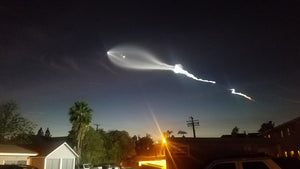Planet Watching & Messier Objects
In Our Solar System
Venus climbs higher into the evening for twilight and should be seen over the northwestern horizon from about 20 minutes after sunset. A waxing crescent Moon will hang over Mars on the 13th. The fading Mars starts the month in Gemini and crosses into Cancer on the 8th. Saturn is in Capricornus and Jupiter is in the nearby Aquarius. Both giants can be easily seen after midnight throughout the month. The waning gibbous Moon will pass the planets on the 27th and 28th. Neptune rises around midnight, with Uranus following a few hours later. Mercury appears low above the northeastern horizon about 20 minutes before sunrise for the last few days of the month. New Moon on the 10th and full Moon on the 24th.
M101-The Pinwheel Galaxy

Image: ESA/Hubble
We are coming to the end of galaxy season, but there are still many to enjoy before summer begins. M101, the Pinwheel Galaxy, can be found close to Alkaid and Mizar, two of the bright stars that make up the handle of the Big Dipper. Despite its brightness, the galaxy has a large apparent diameter, making this a challenging target for both binoculars and small telescopes. With a medium-sized scope, averted vision, and a magnification of 70x or more will show two faint spiral arms curling clockwise around the core. The brighter of the two originates from the southeastern side of the core, with a fainter arm originating from the west. Larger scopes may also reveal some texture within the arms.
Messier 4

Image: ESO
This globular cluster can be seen using binoculars and is a highlight of summer skies. When using a telescope and a magnification of around 75x, a prominent bar will reveal itself across its center.







